These pictures were taken on the UC Berkeley campus at the rally protesting Israel's "bypass roads" on November 29, 2004.
Monday, November 29, 2004 was the 57th anniversary of Resolution 181, the United Nations vote which partitioned British possessions in the Holy Land into two states, one for Jews and one for Arabs. While some regard this as the day Israel was born, this year the UN decided to commemorate their vote by declaring November 29 as "International Day of Solidarity With the Palestinian People."
At UC Berkeley, the student group Students for Justice in Palestine (better known as SJP) chose this symbolic day to stage a peculiar bit of anti-Israel street theater. Their grandiose goal was to create a "bypass road" across Sproul Plaza, thereby compelling students to experience the same inconveniences that the Palestinians endure.
The term "bypass road" refers to the roads that connect the Israeli settlements in parts of the West Bank and Gaza. Because of numerous incidents of terrorism in the past along these roads, they have slowly evolved to become fortified thoroughfares, similar to miniature highways connecting the various towns, with no offramps except in the settlements themselves. Occasionally, the roads have to cut through certain rural and semi-urban areas, sometimes making it inconvenient for Palestinians trying to reach a destination on the other side of the road, necessitating detours.
If you think this was a somewhat obscure basis for a protest, well -- you'd be right. 98% of the passersby obviously had no clue as to what the rally was about.
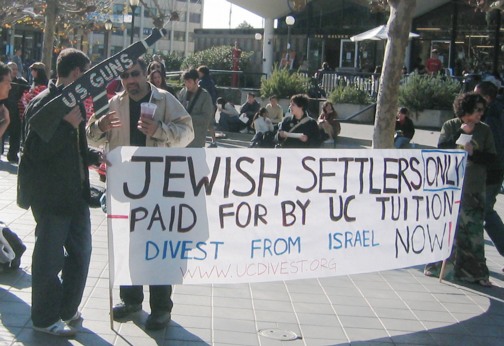
At the front of the "road," SJP members held a banner declaring that it was for Jews only. But the banner itself blocked access to the metaphorical "road," so that no one could enter it anyway.
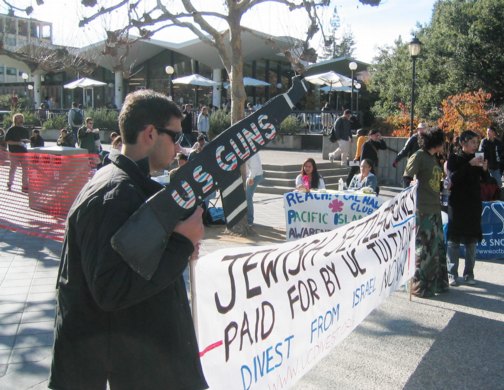
A couple of the protesters brandished mock machine-guns. They were marked as "U.S. Guns" even though I'm pretty sure the Israeli army uses its own guns. Perhaps they meant "U.S.-Funded Guns."
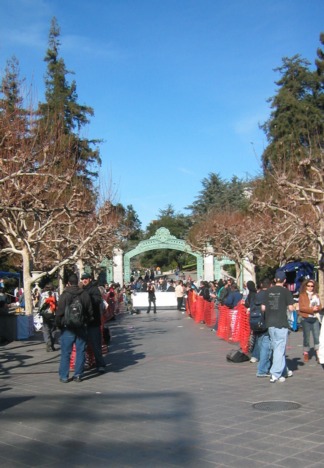
Here's a view of the entire "road" -- marked by protesters holding orange netting. As you can see, there were only enough protesters to hold about 20 yards of netting. Because of the meager turnout, passing students were for the most part not even aware that there was any kind of "road" blocking their way. Most just kept walking without giving it any notice.
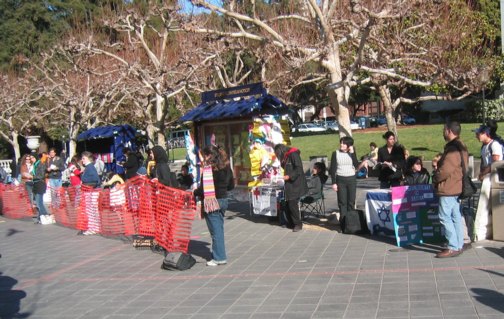
Perhaps coincidentally, the protesters positioned themselves so that the road connected the Hillel booth at one end...
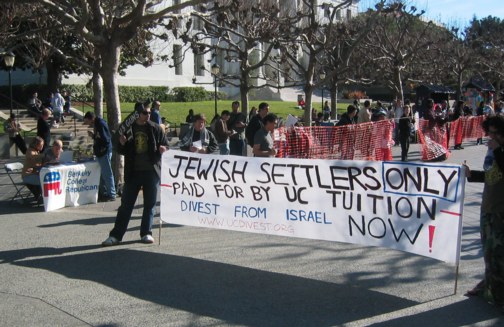
...with the Berkeley College Republicans at the other end. Ha ha! How clever!
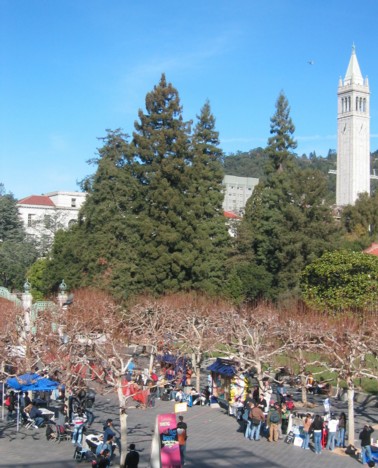
An overhead view of the scene shows just how paltry the whole affair was.
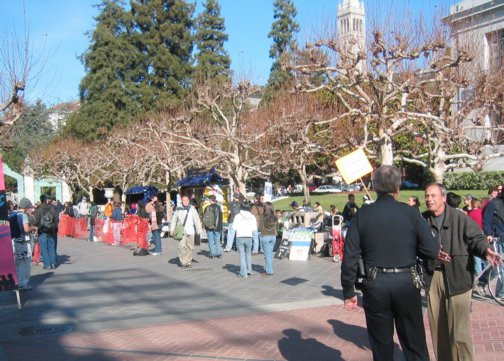
The police stood around with nothing to do but chat with passersby.
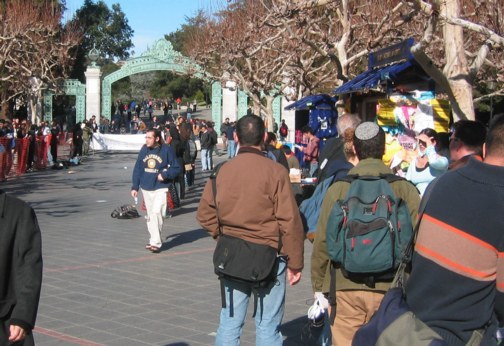
Local Jewish groups, fearing a much larger and more inflammatory event, had come to observe the proceedings, but there was little to observe.
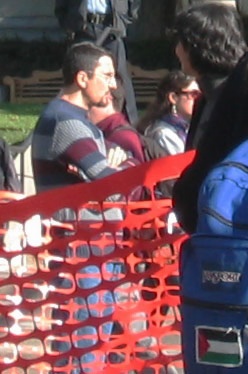
Someone who looked an awful lot like Hatem Bazian (a controversial Cal lecturer who had been the faculty advisor for SJP) monitored the proceedings as well. I'm not sure it really was him, however.
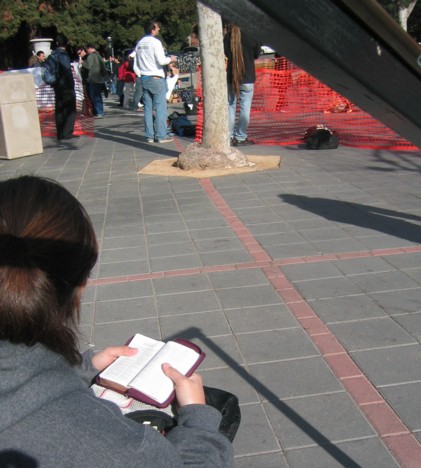
Occasionally, the protesters' anti-Israel chants distracted nearby students sufficiently that they looked up from their books.
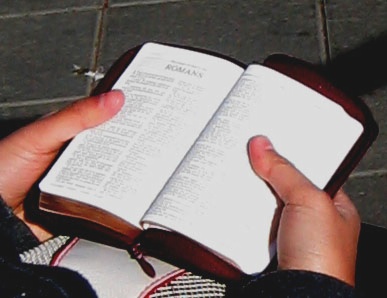
Interestingly, this student was studying a book that took place in ancient Israel. She had just finished reading the part where Paul had a certain experience on a "bypass" road through the West Bank.
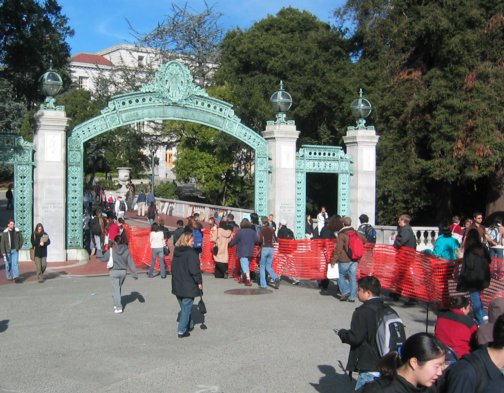
After only an hour or so of futility, the SJP packed it in, and unceremoniously trooped off with the orange netting in tow.
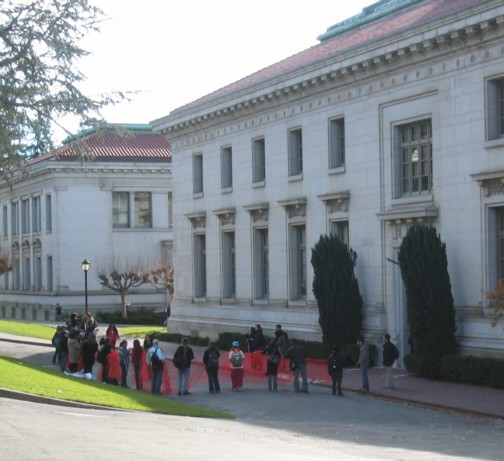
But wait! Before calling it a day, they stopped off at California Hall, which holds the university's administration offices, to belt out a few more chants and call for divestment from Israel. Separated from all the crowds and bystanders on Sproul Plaza, the rally was revealed to consist of only about 20 protesters. Standing all by themselves in the chilly shadow of California Hall, they looked a bit pathetic.
And so the rally came to a fitting anti-climax.
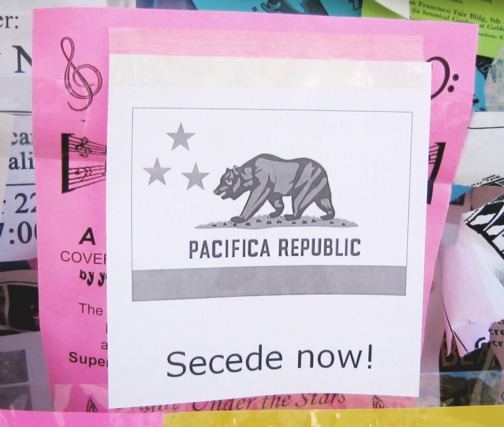
At least the sign on a nearby wall had a message that just about everyone could agree with.